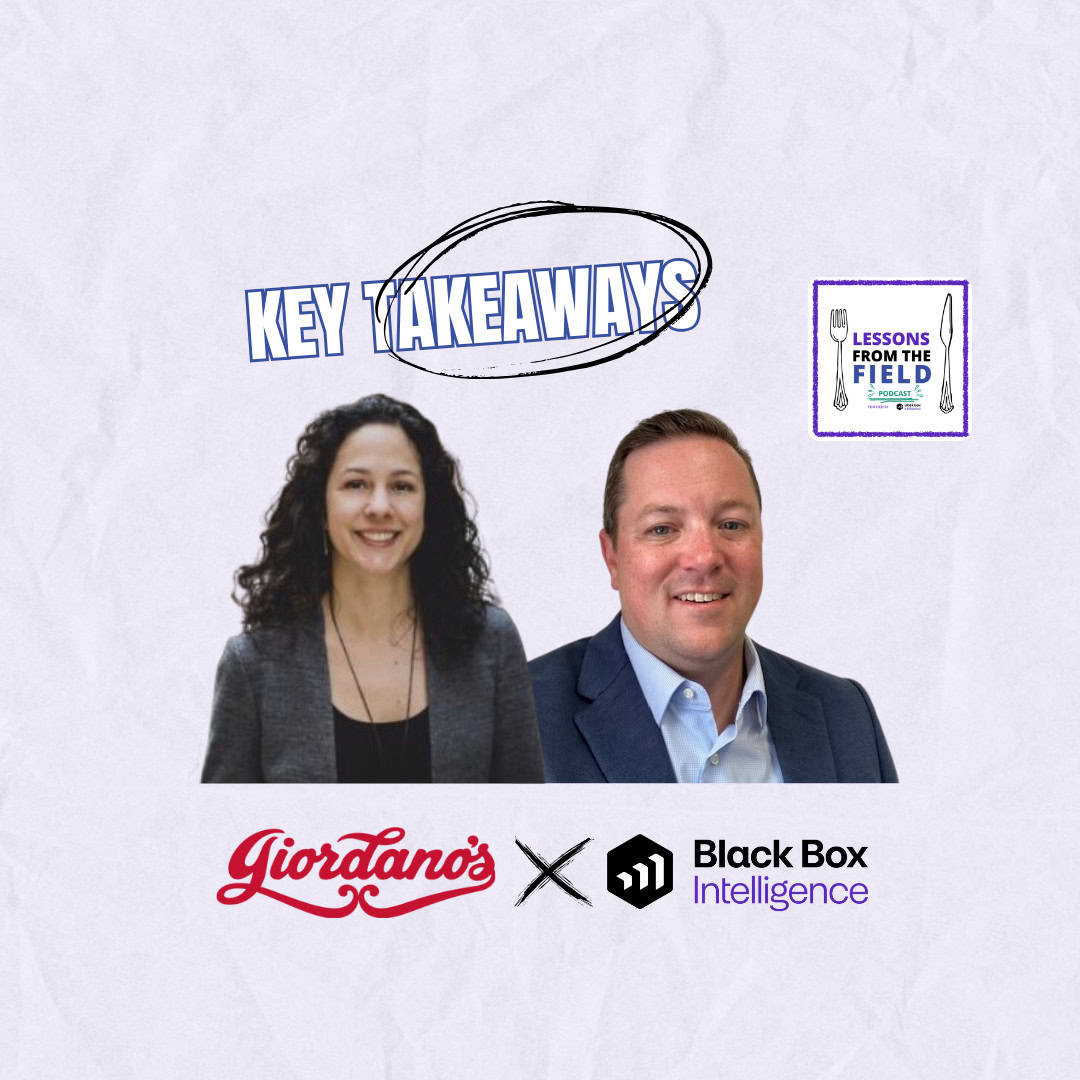 Key Takeaways
Key Takeaways
What You Need To Know:
- Leverage data to tackle industry challenges and stand out in a crowded market
- Invest in technology
- Leverage benchmarking data for better data-informed decisions tailored to each customer segment
- Levarge third-party delivery to evolve and adapt to consumer behaviors

The difference between brands that win and lose all comes down to how they leverage data.
This was the central theme of the recent Lesson From the Field, “How Giordano’s Finance Leadership Leans on Data to Drive FP&A Strategy.”
David Poole, President and CFO, and Celia Perez, Senior Vice President of Finance at Giordano’s, shared how the iconic pizza brand integrates data into its financial planning and analysis (FP&A) strategy.
They covered insights designed for executives looking to refine decision-making with data.
Here are the key takeaways…
Setting the Stage: Leaders Behind Giordano’s Financial Success
With decades of combined experience, Poole and Perez have honed a dynamic approach to FP&A.
Poole, with Giordano’s since 2013, oversees strategic growth and operational execution. Concurrently, he balances the demands of a competitive restaurant market.
Meanwhile, Perez is a seasoned finance leader with over 15 years in the industry. She manages the granular details of Giordano’s financial data. She thrives in translating raw numbers into actionable plans.
Together, they showcase how an aligned team can bridge high-level and day-to-day success.
How? The use of data is central to FP&A strategy.
Tackling Industry Challenges with Data
Staying Ahead in a Crowded Market
In an era defined by shifting consumer expectations, Giordano’s faces fierce competition. As Poole explained, post-pandemic trends have made value perception critical. Customers are more selective than ever. And more so, it’s forcing brands to offer high-quality products at a competitive price.
Using data, Giordano’s teams identify areas to refine and compare against their peers.
They do so to understand where the brand excels and where it can improve.
Investing in Technology
To remain competitive, Giordano’s has prioritized technology upgrades in 2025.
This includes a new POS system.
According to Perez, the system will improve data accuracy. Additionally, it will help the operations team forecast seasonal trends.
These investments reflect Giordano’s commitment to staying agile in a fast-changing market.
Moreover, it cements the brand as a hallmark of a successful data-driven FP&A strategy.
Leveraging Data as a Strategic Compass
Benchmarking for Better Decisions
Benchmark data is central to Giordano’s FP&A process. By using tools like Black Box Intelligence, the team compares key metrics.
This includes traffic, pricing, and average checks. Then, it compares the data against industry benchmarks. This contextual approach allows them to:
- Check the effectiveness of marketing campaigns.
- Understand performance in specific geographic markets.
- Adjust strategies for delivery, carryout, and dine-in operations.
For example, Poole emphasized the importance of segmentation.
He noted, the brand’s dine-in experience differs greatly from its delivery-focused markets. Benchmarking enables them to make data-informed decisions tailored to each customer segment.
Marketing initiatives are carefully tracked using pre- and post-campaign analysis. By benchmarking against broader industry trends, the team ensures pinpoint accuracy. This means they can determine if gains are truly the result of marketing or external factors.
Navigating the Evolving Delivery Landscape
Giordano’s legacy as a delivery pioneer positioned the brand to weather the pandemic.
Yet, it also brought new challenges: The rise of third-party delivery.
Platforms like DoorDash and Uber Eats introduced competition that didn’t exist before.
“Historically, delivery was incremental for other brands,” Poole explained. “but it’s been core to our business for 50 years.”
Adapting to this new reality required Giordano’s to leverage its data to:
- Understand delivery trends.
- Optimize partnerships with third-party platforms.
- Maintain control over the customer experience.
By segregating third-party and direct delivery data, Giordano’s ensures forecasts reflect the dynamics of both revenue streams.
Aligning Data with Long-Term Strategy
Data-Driven Boardroom Discussions
Giordano’s leadership uses data to present a comprehensive narrative to its board.
Thus balancing granular insights with broader market trends.
This helps secure investments for key initiatives.
Notably, market expansions or new technology rollouts can be singled.
This can be done by demonstrating how efforts align with broader industry performance.
Smart Market Expansion
Site selection for new locations is another area where Giordano’s uses data to mitigate risk. The team analyzes demographic, geographic, and restaurant market trends to identify opportunities. Benchmarking data provides an extra layer of confidence.
Therefore, it ensures growth decisions are backed by metrics and external market realities.
Conclusion
As the industry continues to evolve, a data-driven FP&A strategy is essential to success. Giordano’s approach—rooted in data analysis and key decision-making—offers a blueprint for growth.